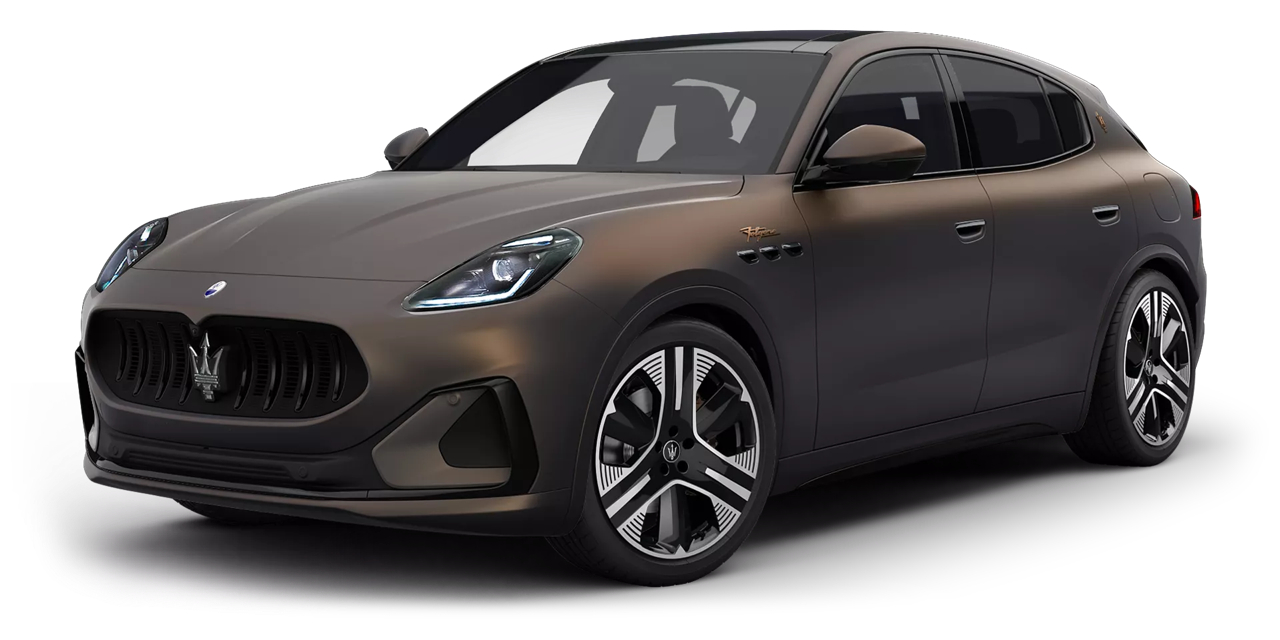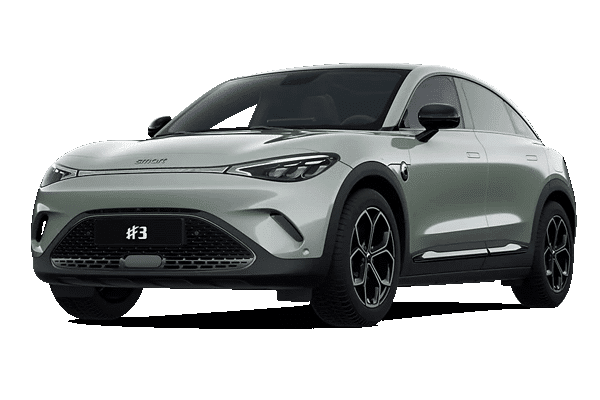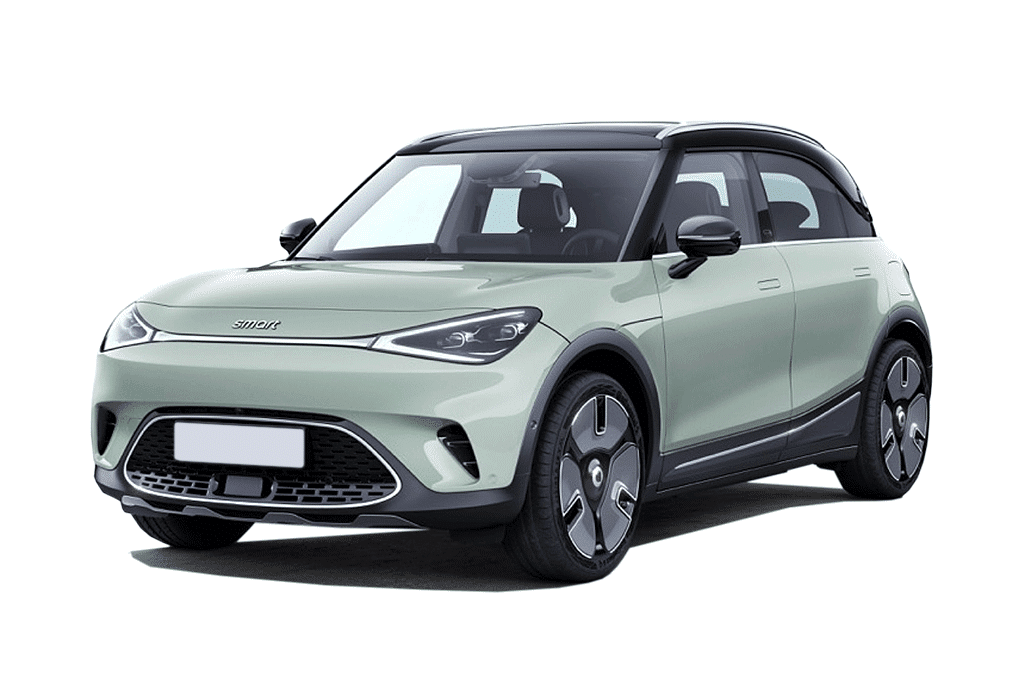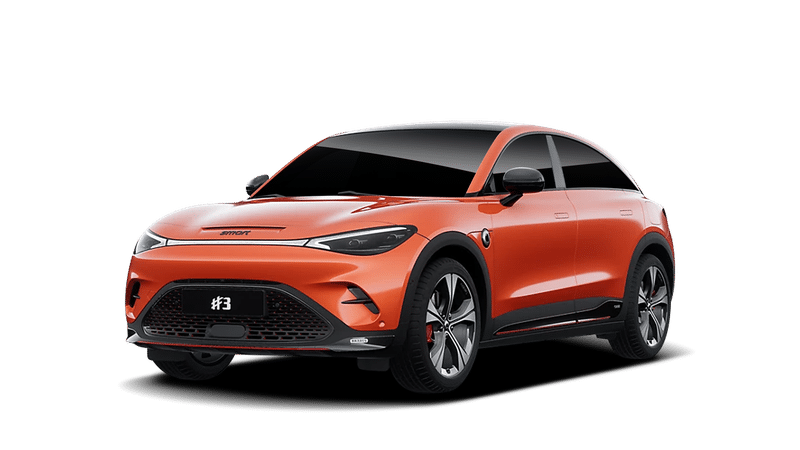Get your best offer for the smart #1 Brabus
Electric SUV
Safety score (2022) 5/5
Adult occupant protection : 96/100
Protecting young passengers : 89/100
Protecting vulnerable road users : 71/100
Safety-enhancing technologies : 88/100
LLD (long-term leasing)
from :
765 €
per month incl. VAT*.
from :
663 €
per month incl. VAT*.
LOA (Lease with purchase option)
Price on request
Price on request
Prix catalogue hors bonus écologique : 51 315 €
Prix catalogue hors bonus écologique : 51 315 €
Pourquoi choisir Beev pour votre nouvelle smart #1 Brabus électrique ?
- The best price on the market
-
Toutes les
marques -
Un service
premium -
Délai de livraison
réduits
Autonomy
How many kilometers can I cover with the smart #1 Brabus?
A vehicle's range is the distance it can cover without being refueled when its energy is at its maximum capacity.
Browse to 400 km(1) in a single charge.
(1) WLTP range
from 0% to 100%.
Simulating autonomy in real-life conditions
Did you know that the seasons and the type of road influence range?
385 km (15km)
278 km (123km)
475 km (-75km)
325 km (75km)
295 km (105km)
230 km (170km)
Real autonomy from 0% to 100%.
17.1 kWh/100 km 23.1 kWh/100 km 13.1 kWh/100 km 19.1 kWh/100 km 21.0 kWh/100 km 27.0 kWh/100 km
Estimation of energy consumption in real-life conditions
19.1 kWh/100km
WLTP combined energy consumption
WLTP?
What is WLTP?
WLTP certification is a series of mandatory tests that certify compliance compliance with new regulations for all new vehicles arriving on the market. market.
Refill
How long does it take to recharge the smart #1 Brabus?
Plus la recharge mesurée en kW sera puissante, plus votre voiture électrique sera rechargée rapidement.
27 mn de recharge pour parcourir 320 km*
* DC fast charge - from 10% to 80%
Calculation according to WLTP standard
Slow load - AC
La charge lente ou courant alternatif correspond généralement aux bornes de recharge à domicile
22 kW Puissance de recharge max
3h30 Temps de recharge de 0% à 100%
Connector
Type 2
Cost of a refill* from 0% to 100%.
*Prix pour une recharge lente AC de 0% à 100%
Calcul basé sur un prix théorique
du kW
à 0.25 €
Fast charging - DC
La charge rapide ou courant continu correspond généralement aux bornes de recharge professionnelles (autoroutes, sur site etc.)
150 kW Puissance de recharge max
1h01 Temps de recharge de 10% à 80%
Simulateur de temps de recharge pour votre
smart #1 Brabus
Niveau de la batterie i Indique le pourcentage de charge actuel de votre batterie.
Autonomie i Affiche les kilomètres estimés restants selon la charge
Temps de recharge selon le type de borne i Comparez les durées de recharge en AC (lente) et DC (rapide)
Min
-
Max
km
Borne de recharge rapide (jusqu’à 350 kW)
Borne publique ou haute puissance (jusqu’à 50 kW)
Borne AC (de 11 à 22 kW)
Borne domestique (de 11 à 22 kW)
Beev compte avec un large choix de bornes de recharge pour tout type de véhicule électrique.
Power
How does the smart #1 Brabus perform?
In automotive parlance, a powerful engine is usually synonymous with higher travel speed. speed. In the case of an electric car, maximum power is determined by the energy supplied by the battery. battery, which in turn depends on torque and engine speed.
Engine power is 428 hp(1)
(1) motive power = travel speed
Torque (Nm) VS Power (hp)
Torque represents the vehicle's acceleration force, while engine power indicates its speed. In other words, engine power determines how long it will take your vehicle to reach maximum speed.
Transmission intégrale
Transmission
3.9 sec
Acceleration from
0 to 100 km/h
584 Nm
Couple
Battery
What is the battery capacity of the smart #1 Brabus?
Battery storage capacity is 66 kWh(1)
(1) Nominal capacity, corresponds to the nominal voltage (average value delivered by the battery during discharge, multiplied by the capacity in Ampere-hours). The cycle of a battery is 1000 to 2000 recharges.
Storage capacity
Today, most electric cars are equipped with at least 40 kWh batteries, and the largest batteries can go up to 120 kWh.
8 ans ou 200000 km
Garantie de la batterie. La première des deux valeurs atteinte met fin à la garantie.
Lithium-ion
Battery type
400 V
Architecture
Dimensions and weights
What are the dimensions and weight of the smart #1 Brabus?
Dimensions
- A : Height = 1636mm
- B : Width = 1822mm
- C: Length = 4300mm
Trunk volume (in liters)
- 976 L Volume coffre arrière max
Number of seats
-
5
Number of seats
with belts
Localisation de la trappe de recharge :
côté gauche à l'arrière
1975 Kg Empty weight
Taxation
How do you calculate the depreciation of an electric passenger vehicle?
For passenger cars included in business assets, the depreciation rules for electric vehicles electric vehicles are subject to ceilings based on their CO2 emissions.
The depreciation ceilings change every year, favoring electric vehicles in a bid to reduce CO2 emissions. Here are the ceilings for 2024.
Please note that these data may change, but we will make sure to provide you with the most recent information. (*)
(*) Source Bofip
30 000€
Depreciation ceiling for vehicles emitting less than 20 g/Km
100%
Depreciable percentage of battery
5 years
Maximum amortization period
Impact on the environment
How can I check the environmental impact of this electric vehicle?
The environmental score is one of the eligibility criteria for the ecological bonus, conversion premium and leasing scheme for new electric passenger cars. and leasing schemes for new electric passenger cars.
0g CO2 emissions
Electric vehicles emit no CO2 apart from their production, unlike combustion or hybrid vehicles. or hybrid vehicles.
Crit-Air sticker
The Crit'Air sticker (air quality certificate) classifies vehicles according to their emissions of
particulate and nitrogen oxide emissions.
The Crit'Air sticker is mandatory for driving in low-emission mobility zones
(ZFE-m) set up by local authorities, or to drive when the prefect institutes differentiated
during pollution episodes.
Consultez nos voitures similaires à la smart #1 Brabus
Consultez toutes les voitures SUVs électriques disponibles
Consultez nos autres voitures électriques de la marque smart
Consultez toutes les voitures électriques de la marque smart
Charging stations compatible with the smart #1 Brabus
À propos de la marque smart

smart #1 Brabus FAQs
Get a quote for the smart #1 Brabus
Get our best offer for the smart #1 Brabus






